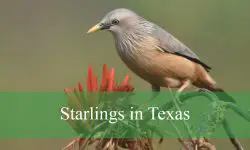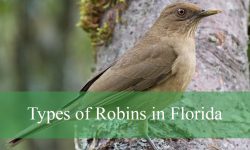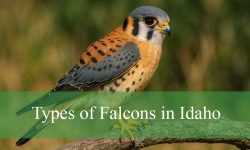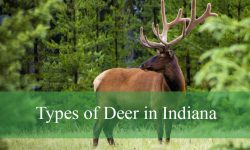Ohio is home to many beautiful blue birds that catch the eye of birdwatchers and nature lovers alike. From the bright blue of the Eastern Bluebird to the striking patterns of the Blue Jay, these birds add vibrant color to Ohio’s forests, fields, and backyards. In this article, we will explore 11 Blue Birds in Ohio with pictures and identification tips to help you recognize them.
Blue Birds in Ohio live in a variety of habitats, including open meadows, wooded areas, wetlands, and urban spaces. Each species has unique behaviors, songs, and appearances that make them special. Learning about these birds can enhance outdoor activities and deepen appreciation for Ohio’s wildlife.
For those interested in birdwatching or simply enjoying nature, knowing the Blue Birds in Ohio is a great way to get started. This guide will help identify each bird by sight and sound, making birding adventures more rewarding and fun.
Common Blue Birds Found in Ohio
Eastern Bluebird (Sialia sialis)
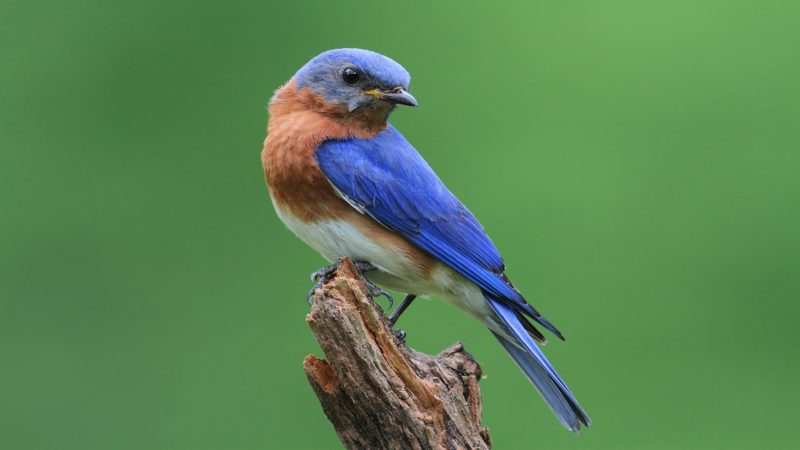
The Eastern Bluebird is a beloved species among bird watchers, easily recognizable by its brilliant blue upperparts and warm rusty-red chest. Males tend to display more vivid coloration, while females have slightly duller hues but maintain the distinctive blue and orange tones. This medium-sized thrush measures about 6 to 7 inches in length with a wingspan of 9 to 12 inches. Its slender body and relatively short tail give it an elegant appearance.
Eastern Bluebirds inhabit open woodlands, farmlands, meadows, and suburban areas, especially those with scattered trees and nesting boxes. They are cavity nesters, often using old woodpecker holes or human-made nest boxes. These birds are known for their gentle, melodic songs and soft calls, which make them easy to identify by sound.
In Ohio, Eastern Bluebirds are permanent residents in the southern parts of the state and tend to migrate to northern Ohio during the warmer months. They feed mainly on insects and small invertebrates like beetles, grasshoppers, and caterpillars during the breeding season, switching to berries and fruits in the winter when insects are scarce.
A fun fact about the Eastern Bluebird is that it was once threatened due to loss of habitat and competition for nesting sites with invasive species like the House Sparrow. Thanks to conservation efforts such as installing bluebird boxes, their population has rebounded impressively in Ohio and across their range.
Blue Jay (Cyanocitta cristata)

The Blue Jay is a strikingly bold and intelligent bird, recognized by its vibrant blue plumage accented with white and black markings, and a distinctive crest atop its head. It is larger than many other common songbirds, measuring around 9 to 12 inches in length, with a wingspan of up to 16 inches. Their robust bodies and strong bills contribute to their assertive presence in Ohio’s woodlands and backyards.
Blue Jays are common throughout Ohio year-round, thriving in forests, parks, suburban areas, and backyard feeders. They have a complex social behavior and are known for their loud, varied vocalizations, including their ability to mimic the calls of hawks, which they may use to deceive other birds or predators.
Their diet is quite versatile, including nuts, seeds, fruits, insects, and occasionally small vertebrates. Blue Jays are also known for their food caching behavior, hiding acorns and other nuts for later consumption, which indirectly helps in forest regeneration as some caches are forgotten and grow into new trees.
An interesting fact about Blue Jays is their role in folklore and culture as symbols of intelligence and curiosity. Their bold behavior and striking appearance often make them a favorite subject for bird enthusiasts in Ohio.
Indigo Bunting (Passerina cyanea)
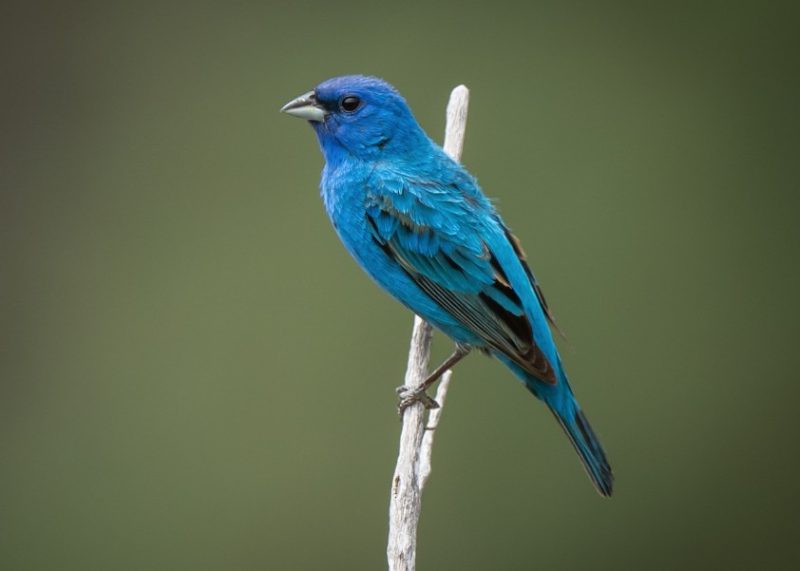
The Indigo Bunting is a small, vibrant songbird about the size of a sparrow, measuring around 4.5 to 5 inches long with a wingspan of about 8 to 9 inches. During the breeding season, males display an intense, electric blue plumage that shimmers in sunlight, while females are more subdued with brownish feathers that provide camouflage.
In Ohio, Indigo Buntings breed during spring and summer, favoring brushy fields, woodland edges, and hedgerows where they can find abundant cover and food. They are migratory, spending winters in Central and South America, then returning north for the breeding season. Their sweet, high-pitched song is a common sound in Ohio’s spring and summer landscapes.
Their diet primarily consists of seeds, berries, and insects, with the latter especially important during the nesting season to provide protein for growing chicks. Indigo Buntings are known to feed on the ground or in shrubs, often flitting from perch to perch in search of food.
A fun fact about Indigo Buntings is that their striking blue color does not come from pigment but from the way light scatters through their feather structures, a phenomenon known as structural coloration. This gives males their brilliant, shimmering appearance.
Tree Swallow (Tachycineta bicolor)
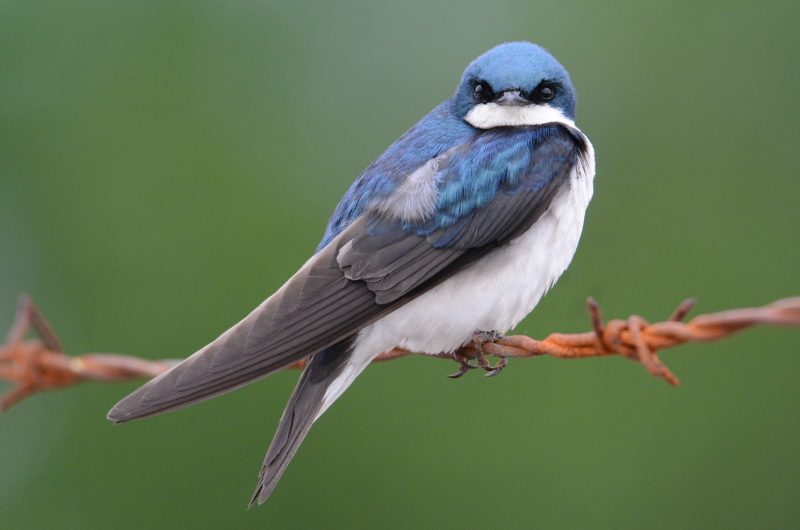
Tree Swallows are sleek, graceful birds measuring about 5 to 6 inches long with a wingspan near 12 inches. Their glossy iridescent blue-green upperparts contrast sharply with their clean white underbellies, making them a striking sight in flight. Their streamlined bodies and long, pointed wings make them incredibly agile fliers.
These swallows frequent wetlands, rivers, ponds, and open fields throughout Ohio, where they nest in natural tree cavities or nest boxes. They migrate through Ohio during spring and fall migrations, sometimes forming large flocks that create impressive aerial displays. In summer, they breed in northern Ohio and surrounding areas.
Tree Swallows primarily feed on flying insects such as flies, beetles, and moths, catching them mid-air with impressive speed and maneuverability. They also consume berries in colder months when insects are less available. Their aerial feeding habits help control insect populations in Ohio ecosystems.
An interesting behavior of Tree Swallows is their habit of aggressively defending nesting territories against other cavity-nesting birds, sometimes even evicting competitors. Their social nature and stunning flight patterns make them a favorite for birdwatchers in Ohio.
Barn Swallow (Hirundo rustica)

Barn Swallows are easily recognized by their deeply forked tails, steel-blue backs, and warm orange underparts. They are slightly larger than Tree Swallows, measuring around 7 to 8 inches long with a wingspan close to 13 inches. Their sleek bodies and long, pointed wings make them agile and fast fliers.
In Ohio, Barn Swallows are summer visitors that arrive in spring to breed. They prefer open areas such as farmland, meadows, and wetlands and often nest on human-made structures like barns, bridges, and other open buildings. Their mud cup nests are usually attached to beams or ledges in these locations.
Their diet consists almost entirely of flying insects, including flies, beetles, and wasps, which they catch in mid-air using their swift and acrobatic flight skills. This feeding behavior helps reduce insect pests in Ohio’s agricultural landscapes.
A fun fact about Barn Swallows is their strong migratory instinct — they travel thousands of miles each year between North America and their wintering grounds in Central and South America. Their long migrations and striking tail feathers make them one of Ohio’s most charismatic blue birds.
Cerulean Warbler (Setophaga cerulea)
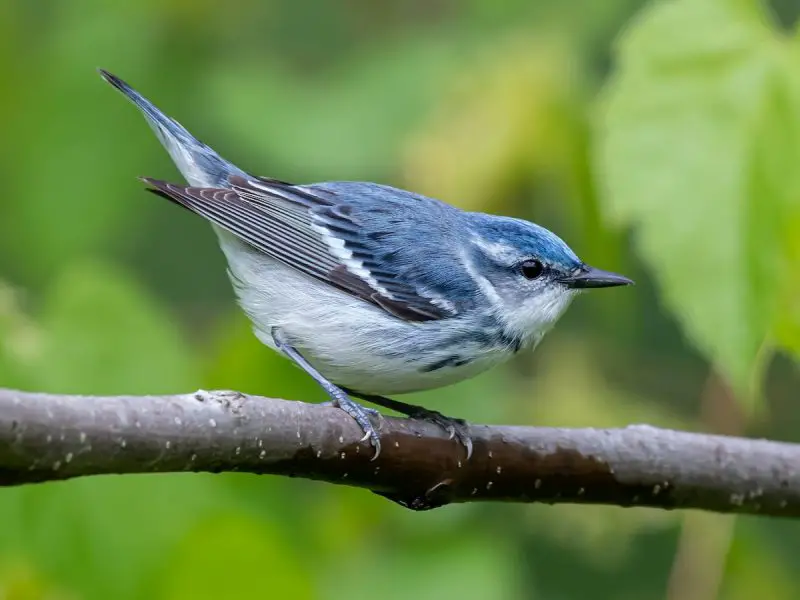
The Cerulean Warbler is a small songbird known for its stunning sky-blue coloration and delicate build, measuring about 4.5 inches long with a wingspan of roughly 7.5 inches. Males showcase vibrant blue upperparts with white underparts, while females and juveniles are more muted with grayish-blue tones. Their petite size and fast, fluttering flight make them a challenging but rewarding sight for birders.
This species prefers mature deciduous forests with tall trees and an open canopy, commonly found in southern and eastern Ohio. They nest high in the tree canopy, often in large hardwood trees, which makes spotting their nests difficult. Their sweet, buzzy songs ring through the forest during the summer breeding season.
In Ohio, the Cerulean Warbler is a summer breeder but has been experiencing population declines due to habitat loss and fragmentation. Conservation efforts focus on preserving mature forests and managing habitats to support this species. Their migration takes them to northern South America for the winter months.
Cerulean Warblers primarily feed on caterpillars, insects, and spiders, gleaning them from foliage. A fun fact is that despite their bright color, they are often elusive and can be hard to spot, making them a prized find for Ohio birdwatchers.
Belted Kingfisher (Megaceryle alcyon)
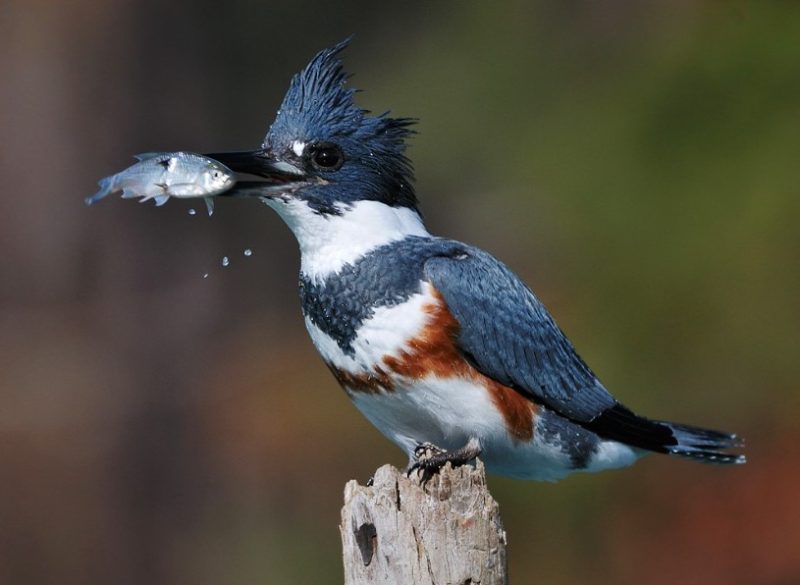
The Belted Kingfisher is a medium-sized bird approximately 11 to 14 inches long, easily identified by its slate-blue back, white underparts, and shaggy crest atop its head. Both males and females share similar plumage, but females have an additional rusty band across the chest. Their strong, sharp bills are adapted for fishing.
These birds are commonly found near freshwater lakes, rivers, and streams throughout Ohio year-round. They nest in burrows excavated in sandy banks close to water. Belted Kingfishers are known for their loud rattling calls and spectacular diving ability as they catch fish underwater.
Their diet mainly consists of small fish, but they also eat crustaceans and aquatic insects. The kingfisher hovers briefly over water before plunging headfirst to catch prey. They play an important role in maintaining healthy aquatic ecosystems in Ohio.
An interesting fact about the Belted Kingfisher is that it is one of the few bird species where the female is more brightly colored than the male. Their striking appearance and energetic fishing displays make them a favorite among birdwatchers in Ohio.
Blue Grosbeak (Passerina caerulea)
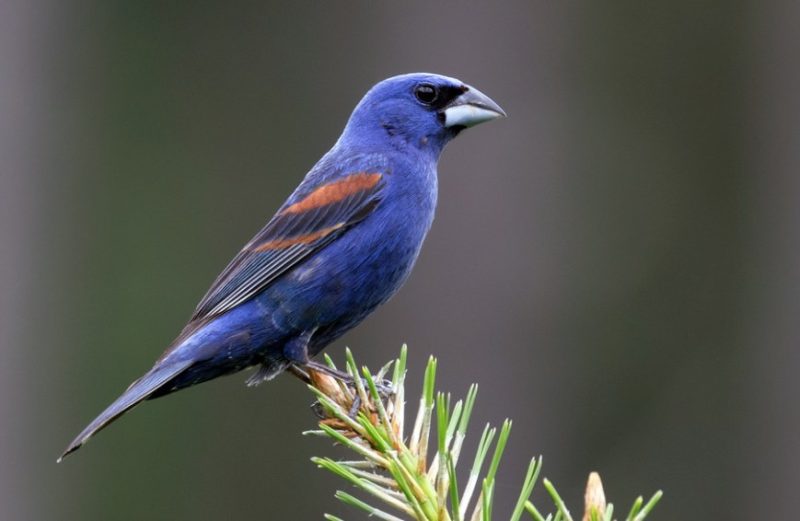
The Blue Grosbeak is a robust, sparrow-sized bird about 6 to 7 inches long with a wingspan of 9 to 11 inches. Males are rich deep blue with two distinctive chestnut wing bars, while females are mostly brown with subtle blue tinges. Their heavy, conical bill is perfect for cracking seeds.
In Ohio, Blue Grosbeaks are rare breeders found primarily in the southern parts of the state during the summer. They prefer shrubby habitats, overgrown fields, and edges of woodlands. They are often secretive but can be attracted to bird feeders with sunflower seeds.
Their diet consists of seeds, insects, and fruits. During the breeding season, they rely more on insects to feed their young. Blue Grosbeaks are known for their rich, melodious songs which carry well through their habitats.
A fun fact about Blue Grosbeaks is that their populations have been increasing in Ohio due to conservation efforts and habitat improvements. Spotting this vibrant bird is a special treat for bird enthusiasts exploring southern Ohio.
Common Grackle (Quiscalus quiscula)
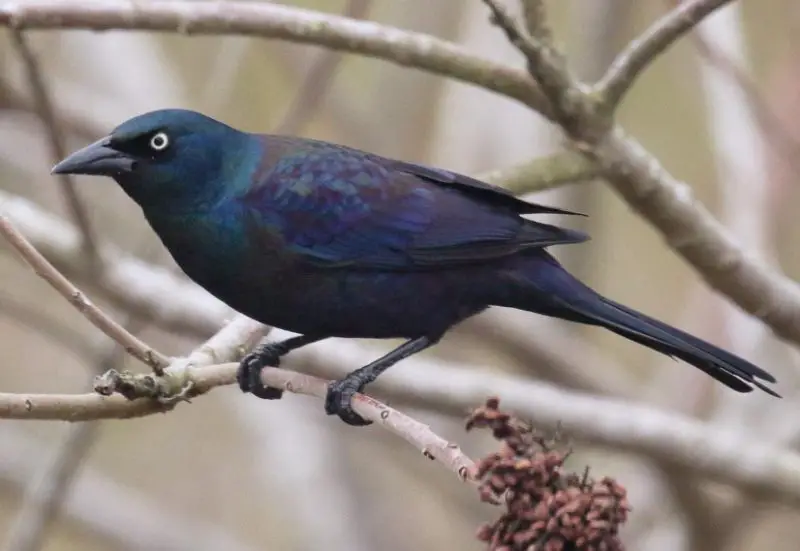
The Common Grackle is a large songbird notable for its glossy black plumage that shines with iridescent blue and purple hues in sunlight. Measuring about 11 to 13 inches long with a wingspan of 17 to 21 inches, these birds have long tails and strong, slightly curved bills. Their sleek, shiny feathers often appear almost metallic.
In Ohio, Common Grackles are widespread and typically seen in large flocks, especially during migration and winter months. They inhabit a variety of open and semi-open habitats, including fields, parks, wetlands, and urban areas. Their raucous calls and noisy behavior make them unmistakable.
Their diet is diverse, including insects, small amphibians, seeds, grains, and even human food scraps. They forage both on the ground and in trees and are known to steal food from other birds and scavenge at picnic areas or garbage bins.
A fun fact about Common Grackles is their ability to use tools in captivity and problem-solving skills, showcasing higher intelligence than many other blackbird species. Their striking iridescent feathers add a beautiful splash of color to Ohio’s birdlife despite their all-black base coloration.
Black-throated Blue Warbler (Setophaga caerulescens)
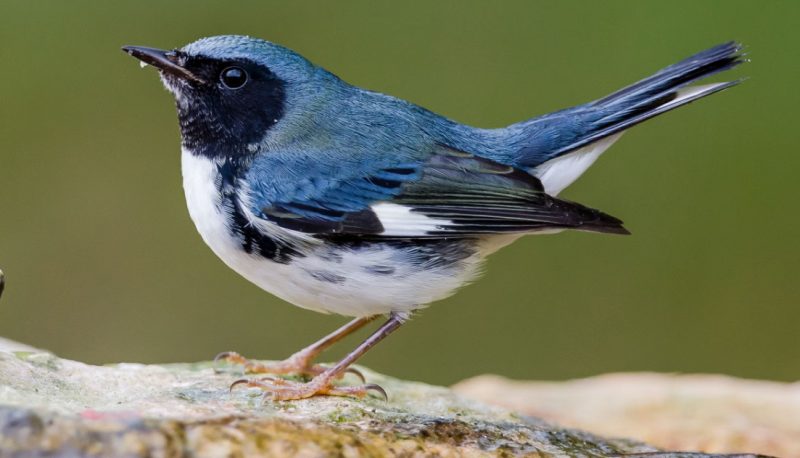
The Black-throated Blue Warbler is a medium-sized warbler approximately 5 inches long, distinguished by the male’s striking deep blue upperparts contrasted with a black throat and white belly. Females and juveniles have olive-green backs with yellowish underparts, making them less conspicuous.
This species is uncommon in Ohio, usually appearing during migration seasons or in dense southern Ohio forests. They prefer mature hardwood forests with thick understory, which provide ample cover and feeding opportunities. Their song is a distinctive, buzzy “zur-zur-zur” often heard in spring.
Their diet mainly consists of insects and spiders, which they glean from foliage and tree bark. They are active and agile foragers, often flicking their wings and tail while searching. The Black-throated Blue Warbler’s striking coloration and elusive nature make it a prized sighting for Ohio birders.
An interesting fact is that despite its rarity in Ohio, this warbler migrates thousands of miles to winter in the Caribbean, demonstrating impressive endurance for such a small bird.
Mountain Bluebird (Sialia currucoides)
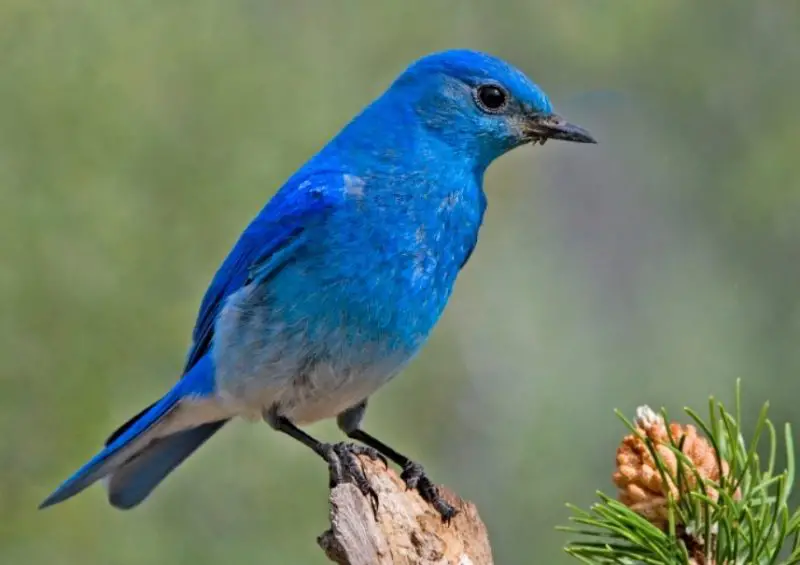
The Mountain Bluebird is a medium-sized thrush about 7 inches long with a wingspan around 12 inches. Males display vibrant sky-blue plumage all over, while females are paler blue with grayish tones. They have a slender body and a thin bill adapted for catching insects.
Though native to western North America, the Mountain Bluebird is a rare visitor in Ohio, typically seen during migration or when individuals stray far from their usual range. They inhabit open habitats like grasslands, prairies, and mountainous areas in their normal range.
Mountain Bluebirds primarily feed on insects and small invertebrates caught on the ground or in flight, supplementing their diet with berries in colder months. Their graceful flight and bright coloration make them stand out among other bluebirds.
A fun fact is that occasional Mountain Bluebirds show up in Ohio, thrilling local birdwatchers, as these sightings are quite unusual and exciting due to the bird’s typical western distribution.
FAQ About Blue Birds in Ohio
What Are Some Common Blue Bird Species Found in Ohio?
Ohio is home to several striking blue bird species including the Eastern Bluebird, Blue Jay, Indigo Bunting, Tree Swallow, Barn Swallow, and others like the Cerulean Warbler and Belted Kingfisher. These birds vary in size, habitat preference, and behavior.
When Is the Best Time to See Blue Birds in Ohio?
Many blue bird species are most visible during spring and summer when they breed and raise their young. Migratory species like the Indigo Bunting and Cerulean Warbler pass through Ohio primarily during spring and fall migration seasons. Some species, like Blue Jays and Belted Kingfishers, are year-round residents.
What Habitats Do Blue Birds Prefer in Ohio?
Blue birds in Ohio occupy a range of habitats. Eastern Bluebirds favor open fields and meadows with scattered trees, while Blue Jays thrive in forests and suburban areas. Tree Swallows and Barn Swallows prefer wetlands and open fields near water. Cerulean Warblers are found in mature deciduous forests.
What Do Blue Birds Eat?
Diet varies by species but generally includes insects, berries, seeds, and small invertebrates. For example, Eastern Bluebirds eat insects and fruits, Blue Jays have an omnivorous diet including nuts and small animals, and Tree Swallows catch flying insects in mid-air.
How Can I Attract Blue Birds to My Backyard?
To attract blue birds like Eastern Bluebirds and Indigo Buntings, provide nesting boxes, native plants, and fresh water sources. Avoid pesticides to ensure a healthy insect population for feeding. For swallows, providing open areas near water is beneficial.
Are Any Blue Bird Species in Ohio Threatened or Declining?
Yes, some species like the Cerulean Warbler have experienced population declines due to habitat loss and fragmentation. Conservation efforts focusing on habitat preservation and restoration help protect these vulnerable birds.
Can I Identify Blue Birds by Their Song?
Yes, many blue birds have distinctive songs and calls. For instance, Eastern Bluebirds have a gentle warbling song, Blue Jays produce loud, varied calls including mimicry, and Indigo Buntings sing sweet, high-pitched tunes.

